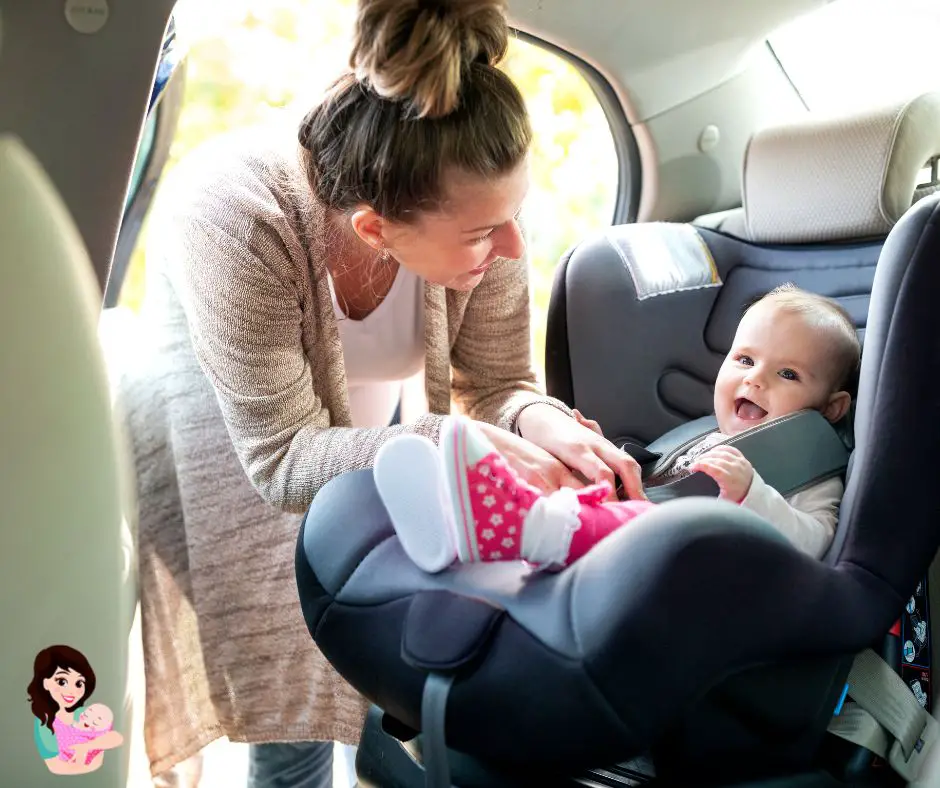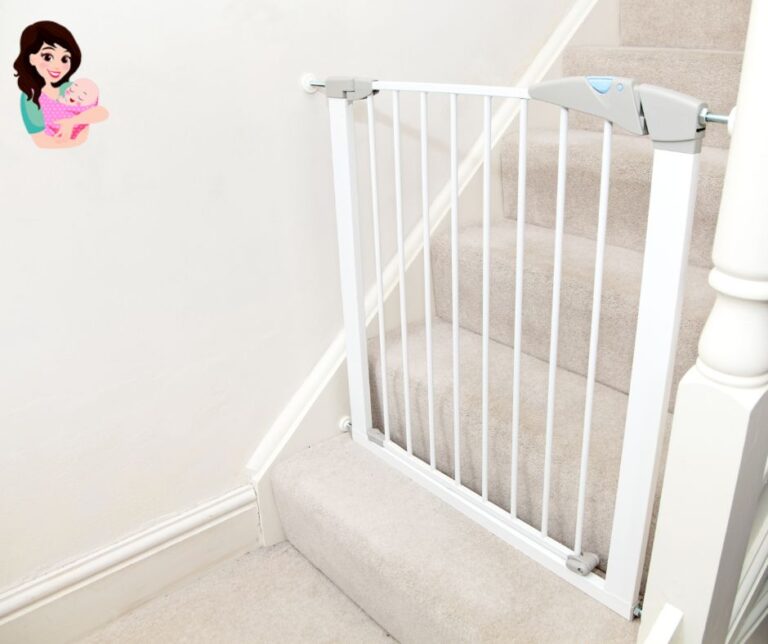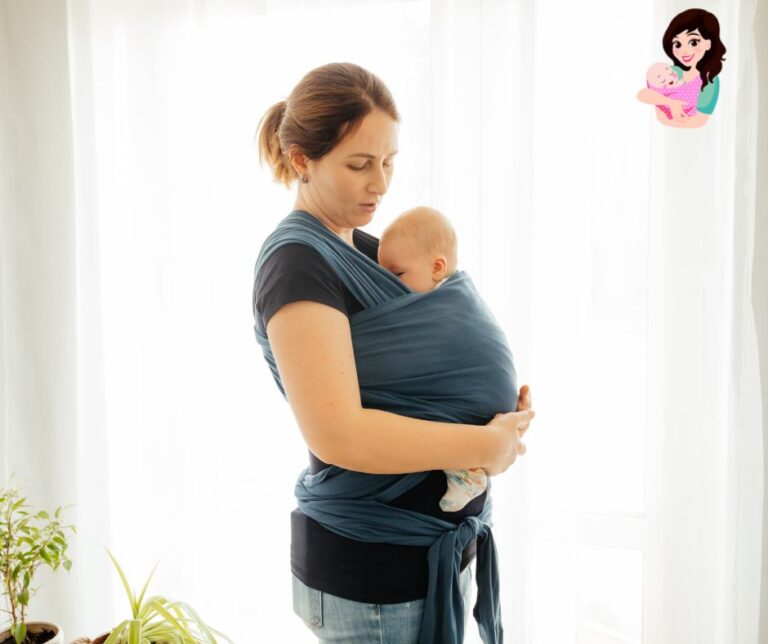
Babies are inherently adorable and amazing. When they’re born, they aren’t able to do much on their own, but they still manage to capture your heart. One of the gifts many parents enjoy giving their baby is an infant car seat.
It seems convenient that you can place your little one in the car seat and move it from place to place without having to carry them. However, there is a time when you will want to upgrade from a baby infant car seat to a regular car seat. So when does a baby outgrow an infant car seat?
The American Academy of Pediatrics (AAP) recommends that you keep your baby in an infant car seat until he reaches the weight or height limit of the seat, which is typically around 35 pounds. However, most infants outgrow their car seats by around 22 to 25 pounds. Besides weight, your child’s height may also determine when you need to switch to a new seat.
What Is an Infant Car Seat?
An infant car seat is a device that holds a child in place, restraining movement during travel in a vehicle. The device usually consists of a base or frame that attaches to the vehicle with special anchors, straps or latch hardware.
The base may also include a removable carrier unit that secures the child within the frame. Most models include an integrated harness system to secure your child in place and prevent movement during travel.
Infant car seats are similar to other types of child safety seats, but they’re smaller and specially designed for infants. They’re made of high-strength plastics, which makes them lightweight and easy to carry around.
We can also use some infant car seats as rear-facing convertible car seats. These types of seats can be used in both rear- and front-facing positions, but they’re not recommended for children who are over 1-year-old or weigh more than 20 pounds.
How to Know When a Baby Has Outgrown an Infant Car Seat
Some important pointers begin to tell us when our babies have outgrown their infant car seats. Some of those pointers include:
1. When they’ve reached the height and weight limit
One of the things we can easily notice about our growing babies is their physical size. Whether you pay close attention or not, noticeable changes will emerge in them. When they reach a certain weight or height, an infant car seat will no longer be suitable for their needs.
After this time, you are going to have to switch them to a more comfortable seat. The average age for this transition is 2 years. But a lot of children grow at their unique pace, so it’s important to work with that. Below are some infant car seats and their weight limits:
- Maxi Cosi Prezi: 1.8kg to 13.6kg
- Graco Snugride: 1.8kg to 13.6kg
- Chicco Keyfit 1.8kg to 13.6kg
- Britax B-safe: 1.8kg to 15.8kg
2. The height of the baby
Another major indication a baby has outgrown his car seat is when his head touches the roof of the car seat. That implies his height is no longer compatible with the car seat and he needs a bigger one. At this point, you should consider a booster car seat or the next size for his age.
3. When the baby and seat get too heavy to carry
As a parent, one inevitable thing you will do with your child is to carry him around for various purposes. Even with the help of strollers for long treks, you still spend most of the time carrying him yourself, especially at home. When you lift your baby and his car seat and you begin to notice an increase in weight, then it’s time to switch his car seat.
What Do You Do When a Baby Has Outgrown an Infant Car Seat?
You’ll probably want to switch to a convertible car seat when your baby outgrows the infant seat. The American Academy of Pediatrics recommends babies ride in rear-facing seats until they are at least 2 years old.
The convertible seat offers more support for older babies and toddlers, and it has some added features that may come in handy as your child grows.
For example, some models have extra padding or cushions for comfort. Others have lower harness heights, as well as adjustable headrests for extra support.
Convertible car seats often have multiple shoulder harness heights (usually four or five) that you can adjust as your child grows. Some even have an adjustable headrest that moves up as your child gets taller, so you don’t have to buy a new seat every time your child outgrows her current one.
What Are the Differences Between an Infant Car Seat and a Convertible One?
As you decide to switch your baby’s car seat from an infant car seat to a convertible, you may want to know the major differences that tell the two seats apart:
Age: they designed infant seats to protect infants from 4 to 35 pounds (about 18 months old). Convertible seats work well for children up to 40 pounds, or approximately 4 years old.
Height: they designed infant seats to fit in the middle of your vehicle’s back seat and have a base that attaches securely to the car’s Latch system for a tight fit with no movement. Convertible seats have bases that typically attach using either Latch or a seat belt and can be installed in both the middle and rear seats of your vehicle.
Weight: Infant seats are lighter than convertible ones because they don’t have additional features such as head support or safety harnesses. Because infant seats are lighter, they’re easier for parents to carry around or adjust without help from another adult.
Safety features: Convertible seats are often heavier than infant models because they have additional safety features such as padded head supports and 5-point harnesses. These extra features keep your child safe in case of an accident.
Bottom Line
There you have it, all you need to know about making the big change about your baby’s car seat. You can check various stores; online and offline for great convertibles.

Hi, This is Emma Baster; As a mom, I spend my free time caring for my kids. I’ve read a lot on the Internet to improve my childcare skill and bring the best to my kids. Eruditemommy shares my knowledge and experience through helpful posts. I hope you enjoy them!






